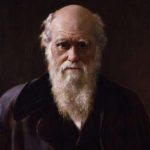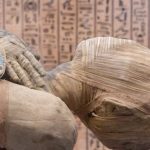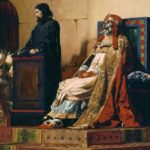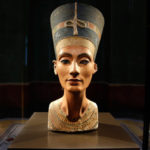 Technology
Technology  Technology
Technology  Humans
Humans 10 Everyday Human Behaviors That Are Actually Survival Instincts
 Animals
Animals 10 Animals That Humiliated and Harmed Historical Leaders
 History
History 10 Most Influential Protests in Modern History
 Creepy
Creepy 10 More Representations of Death from Myth, Legend, and Folktale
 Technology
Technology 10 Scientific Breakthroughs of 2025 That’ll Change Everything
 Our World
Our World 10 Ways Icelandic Culture Makes Other Countries Look Boring
 Misconceptions
Misconceptions 10 Common Misconceptions About the Victorian Era
 Mysteries
Mysteries 10 Strange Unexplained Mysteries of 2025
 Miscellaneous
Miscellaneous 10 of History’s Most Bell-Ringing Finishing Moves
 Technology
Technology Top 10 Everyday Tech Buzzwords That Hide a Darker Past
 Humans
Humans 10 Everyday Human Behaviors That Are Actually Survival Instincts
 Animals
Animals 10 Animals That Humiliated and Harmed Historical Leaders
Who's Behind Listverse?

Jamie Frater
Head Editor
Jamie founded Listverse due to an insatiable desire to share fascinating, obscure, and bizarre facts. He has been a guest speaker on numerous national radio and television stations and is a five time published author.
More About Us History
History 10 Most Influential Protests in Modern History
 Creepy
Creepy 10 More Representations of Death from Myth, Legend, and Folktale
 Technology
Technology 10 Scientific Breakthroughs of 2025 That’ll Change Everything
 Our World
Our World 10 Ways Icelandic Culture Makes Other Countries Look Boring
 Misconceptions
Misconceptions 10 Common Misconceptions About the Victorian Era
 Mysteries
Mysteries 10 Strange Unexplained Mysteries of 2025
 Miscellaneous
Miscellaneous 10 of History’s Most Bell-Ringing Finishing Moves
10 Influential Historical Figures You Never Learned About in School
When we explore the pages of history, we come across famous names and well-known stories. However, many people have been overlooked due to the passage of time or prejudices. Join us as we explore ten influential historical figures you never learned about in school. These trailblazers have shaped politics, science, and culture, and it’s time their stories take center stage.
Related: 10 Historical Figures Remembered For The Wrong Thing
10 Elizabeth Jennings Graham: Paving the Way for Civil Rights in Transportation
In the streets of 19th-century New York City, Elizabeth Jennings Graham emerged as a pioneer for civil rights. Born in 1827, Graham was an African American teacher and church organist who was pivotal in desegregating public transportation.
In 1854, Graham courageously boarded a segregated streetcar. Refusing to leave when the conductor ordered her to, she was forcibly removed. With the community’s support, she filed a lawsuit against the streetcar company, challenging racial discrimination.
Graham was victorious in 1855 when the court ruled in her favor, declaring racial segregation on public transportation illegal in New York. This win predated the more widely known Rosa Parks incident by nearly a century.
So, why haven’t you heard about this incredible woman in school? Sadly, the historical narrative often overlooks the achievements of African American women. Despite being unknown, Graham continued her advocacy for civil rights, establishing the Legal Rights Association and co-founding the city’s first kindergarten for African American children. Her fearless stand against injustice is a beacon of courage and resilience, inspiring future generations to fight for equality.
9 Maurice Hilleman: Unsung Hero of Vaccines
Maurice Hilleman, often dubbed the “father of modern vaccines,” was a scientist whose groundbreaking work has saved countless lives. Born in 1919, Hilleman grew up on a Montana farm, facing adversity and poverty. Despite these challenges, he became one of the most influential figures in vaccinology.
Hilleman’s contributions to public health are immeasurable. Throughout his career, he developed over 40 vaccines, including those for measles, mumps, rubella, chickenpox, and hepatitis B. His efforts have impacted global health, preventing numerous diseases and enhancing the well-being of millions.
In 1957, during the influenza pandemic, Hilleman identified the virus and produced a vaccine in a record time of just four months, showcasing his dedication and expertise. Despite the magnitude of his achievements, Hilleman remained relatively unknown to the public, as his focus was always on science rather than personal recognition.
Maurice Hilleman’s legacy reminds us of the quiet heroes who work behind the scenes to make the world healthier. His story is a testament to the power of perseverance, passion, and scientific curiosity.
8 Mary Anning: The English Paleontologist
Meet Mary Anning, a trailblazing fossil hunter from 19th-century England. Born in 1799 in Lyme Regis, a coastal town famous for its Jurassic fossil-rich cliffs, Anning spent her childhood exploring with her family. Despite limited formal education, her observational skills and determination led her to uncover groundbreaking fossils.
One of Anning’s most notable discoveries was in 1811 when, at the age of 12, she unearthed the first complete Ichthyosaurus fossil. Her findings extended to other ancient creatures like Plesiosaurs and Pterosaurs, challenging scientific beliefs of the time. Anning’s discoveries were pivotal in paleontology, laying the foundation for later scientists.
However, Anning faced gender and class barriers in the male-dominated scientific community. Despite these challenges, her work gained recognition, and leading scientists sought her expertise.
In 1847, Mary Anning passed away, but her impact on paleontology persists. Anning’s legacy endures through her fossil discoveries and as a trailblazer who defied societal norms.
7 Agent 355: Unveiling Washington’s Secret Weapon
Amid the American Revolution, a figure shrouded in mystery and bravery emerged—Agent 355. Little is known about this woman, but her contributions to the fight for independence were significant.
Agent 355 was a spy for the American rebels during the late 18th century. Her true identity remains a secret, adding an air of intrigue to her story. Historians believe she played a role in gathering intelligence and aiding General Washington and his forces in plots against the British.
During this time, secrecy was vital, and Agent 355 excelled at blending in and extracting information. She moved within elite social circles, overhearing conversations and gathering details that proved instrumental to the American cause. The risks Agent 355 faced were immense, as betrayal could lead to imprisonment or death.
Unfortunately, her identity was never revealed, leaving her story hidden in anonymity. However, Agent 355’s bravery and dedication to the cause of freedom left a mark on American history. She represents the heroes who worked behind the scenes while fighting for independence.
6 Percy Julian: The Chemist Who Broke Barriers
Percy Julian, born in 1899, was a pioneering chemist who broke down barriers, leaving a mark on the scientific world. Growing up in racial segregation, Julian faced challenges as an African American scientist. Despite these obstacles, he earned a Ph.D. in chemistry, a remarkable achievement during the early 20th century.
Julian’s groundbreaking work in organic chemistry led to the synthesis of cortisone, a vital component in treating rheumatoid arthritis. His innovations extended to the mass production of affordable synthetic hormones. His perseverance and brilliance earned him recognition as one of the greatest chemists of the 20th century.
Beyond his scientific accomplishments, Percy Julian became a prominent advocate for civil rights. His legacy inspires countless individuals, especially those facing adversity, to pursue their passions and overcome societal limitations.
Unfortunately, the history books often omit Julian’s achievements, reflecting the systemic racism prevalent during the 20th century. As a result, many students never had the chance to learn about his contributions to science and medicine.
5 Henry Dunant: The Compassionate Crusader
Henry Dunant, a Swiss humanitarian born in 1828, changed the world through his compassion and dedication to humanitarian causes. In the mid-19th century, Dunant witnessed the aftermath of the Battle of Solferino. This brutal conflict left thousands wounded and dying. Touched by the suffering, he took immediate action.
Dunant’s moment came when he organized local residents to aid the wounded, regardless of their affiliation. This experience led him to write A Memory of Solferino, a groundbreaking work that advocated for establishing neutral and independent organizations to care for the wounded during war. This vision laid the foundation for creating the International Committee of the Red Cross (ICRC) in 1863, an organization dedicated to humanitarian principles and providing aid to those in need.
Beyond his humanitarian efforts, Dunant’s legacy includes being a co-founder of the Young Men’s Christian Association (YMCA) and receiving the first-ever Nobel Peace Prize in 1901. Dunant’s pacifist stance and focus on healing rather than warfare may have contributed to his being left out of our school lessons despite his profound impact.
4 Elizabeth Cochran, AKA Nellie Bly: Trailblazing Journalist
Elizabeth Cochran, better known as Nellie Bly, was a figure in the late 19th and early 20th centuries who impacted journalism and women’s rights. Cochran was born in 1864 and started her career at the Pittsburgh Dispatch. This is where she adopted the pen name Nelly Bly, which would become synonymous with groundbreaking reporting.
In 1887, Bly burst onto the scene with her daring expose “Ten Days in a Madhouse,” where she went undercover to investigate the harsh conditions of mental asylums. This courageous act unveiled the grim realities of psychiatric institutions and sparked widespread reforms.
One of Bly’s most famous achievements was her record-breaking trip around the world in 72 days, a feat inspired by Jules Verne’s Around the World in Eighty Days. Her journey, filled with adventure and unpredictability, captured the public’s imagination and solidified her status as a trailblazing adventurer.
Despite her remarkable contributions, Bly’s legacy was overshadowed by the prevailing gender biases of her time. Society struggled to accept a woman in the demanding world of investigative journalism, leading to her achievements being downplayed or overlooked.
Beyond her journalistic exploits, Elizabeth Cochran championed women’s rights, advocating for equality in the workplace. She defied societal norms and paved the way for future generations of female journalists.
3 Lewis Latimer: Edison’s Righthand Man
An inventor and engineer, Lewis Latimer marked the world with his contributions during the late 19th and early 20th centuries. Born in 1848, Latimer faced numerous challenges as an African American in a time marked by racial inequality. Despite these obstacles, his inventive spirit soared.
One of Latimer’s notable accomplishments was his work on improving the light bulb. He played a crucial role in developing the carbon filament. This component extended the lifespan of Thomas Edison’s incandescent light bulb. Latimer’s innovations in lighting technology made it more practical and accessible to a broader audience.
Beyond his contributions to lighting, Latimer was a key figure in patent law. His expertise in drafting technical drawings and descriptions led him to work with Alexander Graham Bell. Latimer’s skills were instrumental in securing the patents for Bell’s telephone invention.
The oversight of Lewis Latimer’s legacy results from systemic biases that marginalized minority achievements. Yet, his legacy shines brightly in an era full of progress and challenges.
2 Edith Wilson: The Unofficial First Female President
Edith Wilson played a unique and influential role in American history, earning her the title of the “First Female President.” As the wife of President Woodrow Wilson, Edith assumed an unusual level of responsibility during his presidency. In 1919, President Wilson suffered a severe stroke. Edith, deeply devoted to her husband and the country, stepped in to manage the day-to-day affairs of the presidency.
Edith acted as a gatekeeper, controlling access to the president and filtering information. While she didn’t make official decisions, her influence in shaping the president’s schedule and interactions was substantial. This behind-the-scenes leadership led some to believe that Edith Wilson was, in essence, the de facto president.
Unfortunately, Edith Wilson’s contributions are often left out of standard history books due to the gender norms of her time. Yet, her actions during those crucial years impacted the nation.
Beyond her time in the White House, Edith advocated for women’s rights and was involved in various charitable works. Her role as a trailblazing first lady left a permanent mark on women’s involvement in American politics.
1 Henrietta Lacks: A Secret Legacy Medical Advancement
Henrietta Lacks is not widely known, yet her contributions to medical science have left an unforgettable mark. Born in 1920, Lacks unwittingly played a role in developing numerous medical breakthroughs.
In 1951, while undergoing treatment for cervical cancer, her cells were unknowingly harvested. They became the foundation for the HeLa cell line. These cells proved remarkably robust, allowing scientists to conduct experiments and make groundbreaking discoveries.
HeLa cells have been integral in developing vaccines, understanding diseases like polio and cancer, and advancements in cloning and gene mapping. Henrietta Lacks, however, never lived to witness the impact of her cells, as she passed away at the young age of 31. Sadly, her contribution went unrecognized for decades, and her story sheds light on the ethical concerns surrounding medical research.
In recent years, efforts have been made to acknowledge Henrietta Lacks and her family’s role in medical advancements. The Henrietta Lacks Foundation honors her legacy and ensures her family benefits from the ongoing research.








